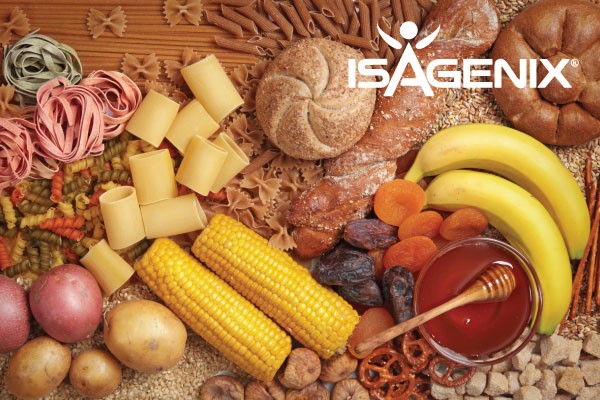Glycemic index, or GI, is a way to rank foods according to the effect that they have on your blood sugar level. Choosing foods with a low or moderate GI matters, because it can provide your body with more sustained energy and help you achieve and maintain a healthy weight.
What is Glycemic Index?
Anytime you eat a meal, your body goes to work digesting the food you’ve just consumed. The nutrients from your meal are then absorbed into your blood stream and transported throughout your body. When you consume carbohydrate-containing foods, the nutrient that appears in your bloodstream after digestion is glucose. It’s what is measured in your blood when a doctor checks your blood sugar level.
When you eat a carbohydrate-containing food that is quickly and easily digested, all of the glucose from that meal hits your bloodstream at once like a tidal wave. When you eat a food that contains carbohydrates that are not as easy for your body to digest, the glucose enters your bloodstream more gradually, like a trickle. The foods that produce a tidal wave effect are high-GI foods while those that produce a trickle effect are low-GI foods.
Why should you choose low-glycemic index foods?
It can be a lot easier for your body to handle a trickle of glucose entering your bloodstream than it is for your body to handle a tidal wave of glucose that hits all at once. Choosing foods with a low GI helps provide sustained energy and can help you manage your appetite (1). High GI foods cause a sharp rise in blood sugar level that is usually followed by a crash that can leave you feeling low on fuel a short time later. Low GI foods help your body maintain steady blood sugar levels and avoid that low-energy feeling.
Research suggests that there may be benefits of low GI foods for supporting effective weight loss and weight maintenance (2). For example, researchers in Germany conducted a weight-loss maintenance study that compared a low GI diet to other types of diets for helping people maintain their weight-loss results over time (3). Participants were randomly assigned to different diet groups to test which diet was more effective for helping maintain weight loss over time. The participants who were assigned to the low GI diet were the only group who didn’t regain weight in this study, suggesting that low GI foods can help in maintaining weight loss over time.
How can you tell which foods have a low GI?
The GI of a food is measured on a scale from 0-100, according to how much that food raises blood sugar levels after you consume it. The lower the number, the less impact a food has on your blood sugar level. Since GI measures the effect that the carbohydrate in foods has on your body, foods that don’t contain carbohydrate like oils or meats don’t have a GI value.
It’s not possible to guess the GI of a food by looking at the ingredients, since many different factors impact how a food will affect blood sugar levels. The GI for any food can only be determined through testing, which is done by measuring how a food impacts the blood sugar levels of healthy people under standardized conditions. This method of testing means that GI reflects what actually happens in your body, not what happens in a test tube or petri dish.
To support healthy blood sugar control, Isagenix IsaLean® Shakes and IsaLean Bars are each tested to ensure they provide balanced nutrition including low-GI, energy-fueling carbohydrates. Whether you are starting your weight-loss journey or you are working to maintain your weight-loss success, choosing foods with low GI can help support your goals.
References
- Krog-Mikkelsen I, Sloth B, Dimitrov D, Tetens I, Björck I, Flint A, Holst JJ, Astrup A, Elmståhl H, Raben A. A low glycemic index diet does not affect postprandial energy metabolism but decreases postprandial insulinemia and increases fullness ratings in healthy women. J Nutr. 2011 Sep;141(9):1679-84.
- Ebbeling CB, Swain JF, Feldman HA et al. Effects of dietary composition on energy expenditure during weight-loss maintenance. JAMA. 2012;307:2627-34.
- Larsen TM, Dalskov SM, van Baak M, Jebb SA, Papadaki A, Pfeiffer AF, Martinez JA, Handjieva-Darlenska T, Kunešová M, Pihlsgård M, Stender S, Holst C, Saris WH, Astrup A; Diet, Obesity, and Genes (Diogenes) Project. Diets with high or low protein content and glycemic index for weight-loss maintenance. N Engl J Med. 2010 Nov 25;363(22):2102-13.





